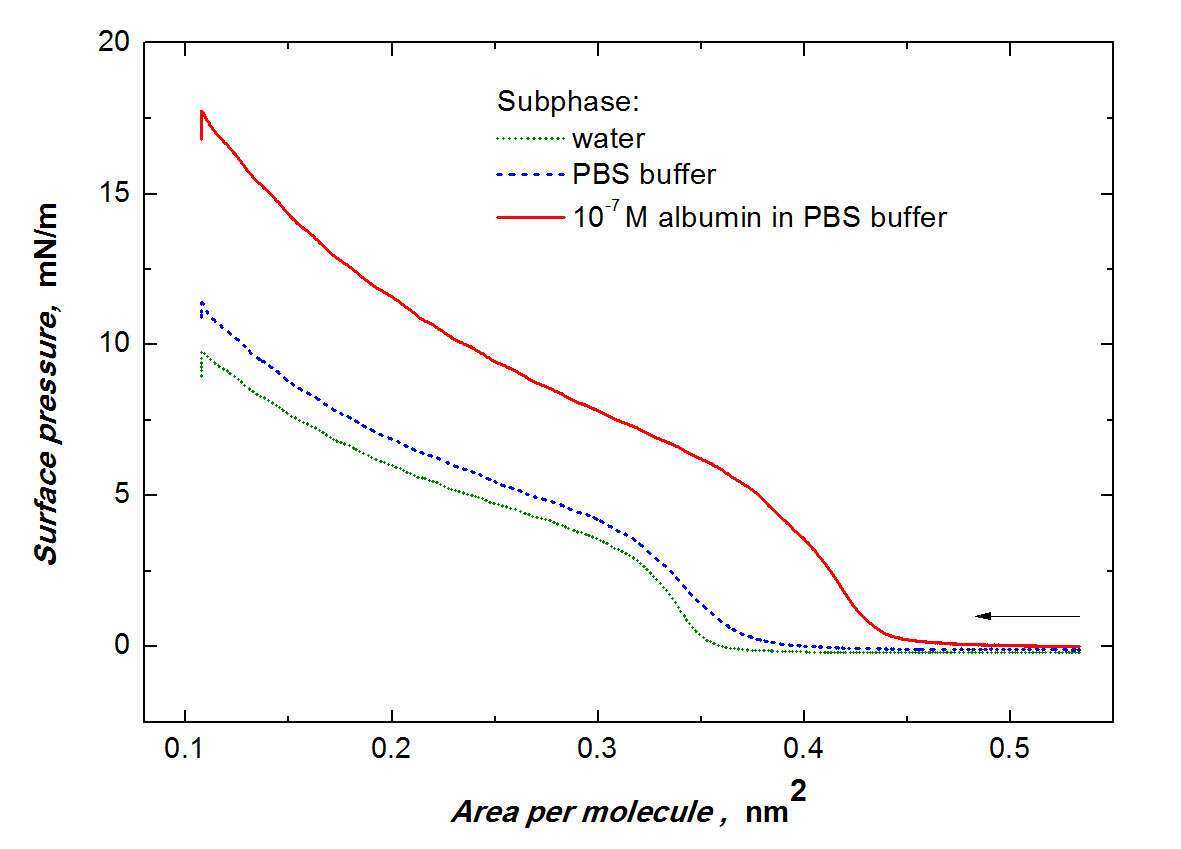
FORMATION OF THE PROTEIN-SURFACE IMPRINTED POLYMERS BY USING LANGMUIR-BLODGETT FILMS OF BIS(BITHIENYL)METHANE DERIVATIVES
2Department of Chemistry, University of North Texas
Surface imprinting is one of the main methods used for preparation of macromolecules-imprinted polymer films applied in chemosensing.1 It allows for preparation of recognition units with unrestricted diffusion of the large molecules of the analyte into the formed recognition sites.
In this presentation we describe method allowing easy formation of thin films of the polymers imprinted with protein with controlled film thickness. The described method is based on self-assembly of the protein template with thiophene functional monomers at air-water interface. The resulting pre-polymerization complex is then transferred onto the transducer surface and polymerized allowing for formation of the stable polymer film. Thickness of the resulting layer is easily controlled from sub-nanometer level to dozens of nanometers.
For this work, human serum albumin (HSA) was used as an analyte. HSA is an important biomarker of numerous diseases;2 therefore fabrication of chemosensor for its determination is of practical interest. For this purpose, self-organization of selected bis(bithienyl)methane derivatives at the air-water interface, and their interactions with the HSA has been studied by the Langmuir technique. Fabricated Langmuir films were transferred onto solid substrates and studied by UV-Vis, PM-IRRAS, XPS and AFM techniques. These studies confirmed formation of HSA-(bis(bithienyl)methane derivatives) complex and its successful transfer on the substrate. Subsequently, the deposited films were electrochemically polymerized in order to stabilize them, and the HSA template was extracted. Finally, formed protein-imprinted polymer films were used as the recognition elements of the extended-gate field-effect transistor (EG-FET) chemosensor. Influence of the film formation and deposition parameters on the chemosensor performance have been studied.

Fig. 1 Langmuir π - A isotherm of mixed layer of bis(bithienyl)methane derivatives on different subphases.
References:
- Iskierko, Z., Sharma, P. S., Bartold, K., Pietrzyk-Le, A., Noworyta K., Kutner W., (2016), ”Molecularly imprinted polymers for separating and sensing of macromolecular compounds and microorganisms”. Biotech. Adv., 34: 30–46.
- Caraceni P., Tufoni M., Bonavita M. E., (2003) ”Clinical use of albumin”. Blood Transfus., 11: 18-25

Powered by Eventact EMS